When I was a little kid, my favorite time of year was fall and winter. My sister and I loved going out into our backyard after the rain and lifting up every rock, stepping stone, and piece of wood we could find in hopes of uncovering worms, salamanders, slugs, roly-polies, and (if we were lucky) the occasional lizard. We did it every year well into our teens, and we still do it as adults.
Our main goal was always to find salamanders. Today, I had the same goal when I decided to spend some time outside for the first time in three days. I woke-up feeling a little off, and felt even more uneasy after spending almost two hours doing a quiz for my evolution class. I figured part of the depressive anxiety I was feeling was due to being inside for the entire weekend other than a quick grocery store trip yesterday. So I packed up my laundry and headed to my mom's house (a three to four minute drive down the road).
After throwing my stuff in the wash, I headed to the backyard where I started lifting up bricks, stepping stones, cardboard, and planks of wood. I did not have much luck finding anything for a while, and ended up switching to bird watching when a California Scrub Jay showed up in the fig tree I was searching under. I took a few photos, but out of respect to my amphibian and reptile friends I will save them for another post.
While exploring the backyard, I kept thinking about how much I love the smell of wet leaf litter and detritus. I even enjoy that somewhat sweet smell of decay under the fig and persimmon tree, where you can't step more than two feet without slipping on slimy fruits in various stages of molding and decomposition.
After a while I got back to poking around for salamanders. The kind of salamanders we have in our backyard are California slender salamanders, Batrachoceps attenuatuss. I was excited to learn about them in my California plants and animals class last winter, as I only knew what they were called and nothing else.
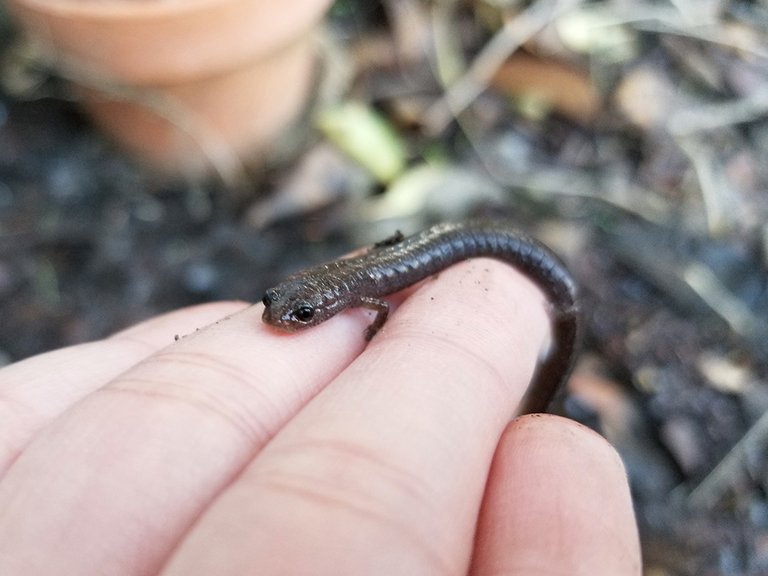 smol :3
smol :3In class I learned they are a type of lungless salamander of the family plethodontidae. They have costal grooves along their body, which are absent in members of the salamandridae family that include the well-known, highly poisonous California newts, Taricha torosa (which are a species of special concern in California).
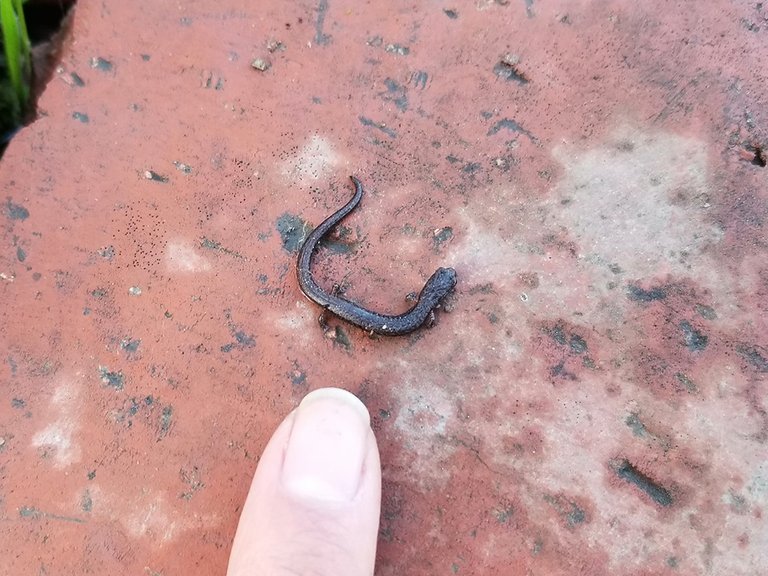 verrrry smol
verrrry smolMembers of plethodontidae also have a nasolabial groove on their face that help them pick up chemical scents of other salamanders. Unfortunately my phone does not have the ability to focus quite that close on such a tiny creature. If it did, I would have also taken macro shots of the TINY LIMBS and TEENSY TOES of the slender salamander. They are so adorable.
While lifting up a rather long plank of wood left over from years ago when we knocked down the old shed my great-grandpa built, I was surprised and very pleased to find an alligator lizard! I was hoping to run into one of these guys!
She was curled up a foot away from a couple of salamanders, but quickly unfurled when I put the wood down. There are a couple of species of alligator lizard here in California, and I believe she is a southern alligator lizard, Elgaria multicaronata because of her light eyes. I did not want to stress her out and pick her up, so I did not see her belly which could have provided more clues as to what species she is.
I remember a very long time ago my older sister found a bunch of alligator lizard eggs under a piece of wood beneath our kitchen window. I would love to find another nest in our yard some day.
After about two hours I figured I better get going back home. I left feeling so much better than when I arrived.
All this salamander talk has me wanting to go out into the Santa Cruz mountains to find some California newts to post about. They are really cool, as they are migratory and they have two different forms depending on what time of the year it is and whether they are spending most of the their time terrestrial or aquatic (breeding or non-breeding). Maybe I can get my bf to take me on a hike sometime in the next month...
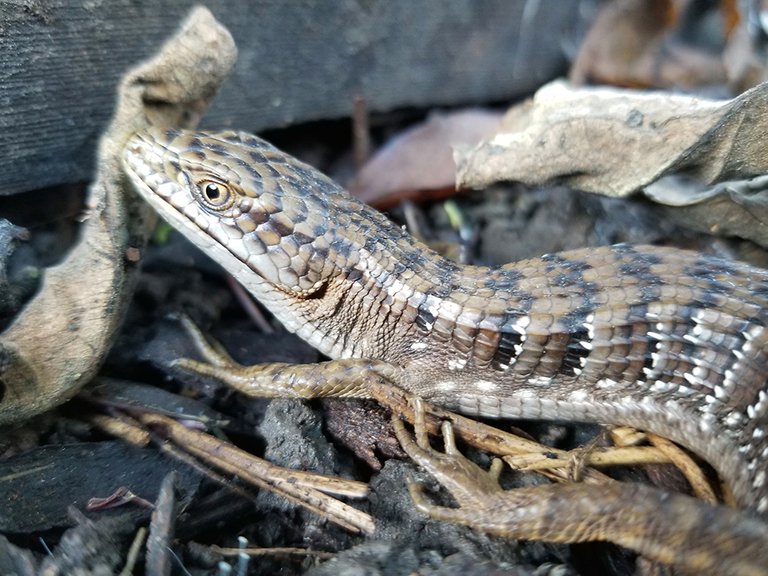
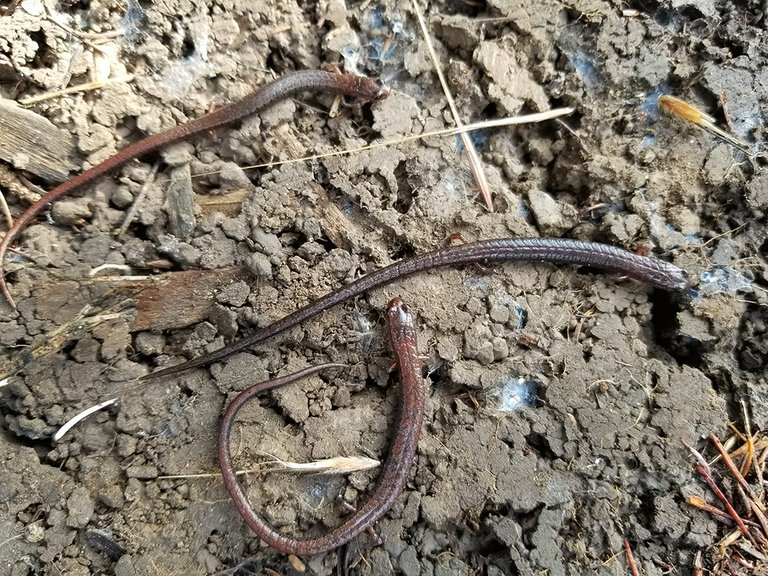

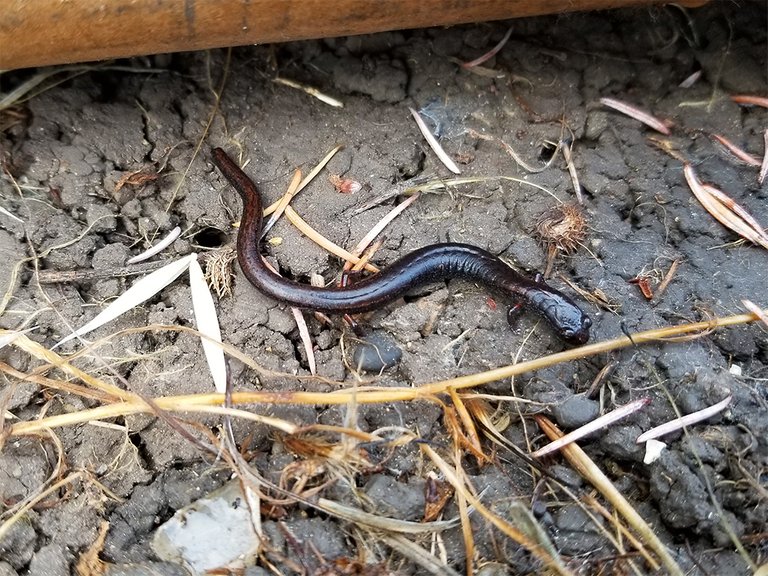

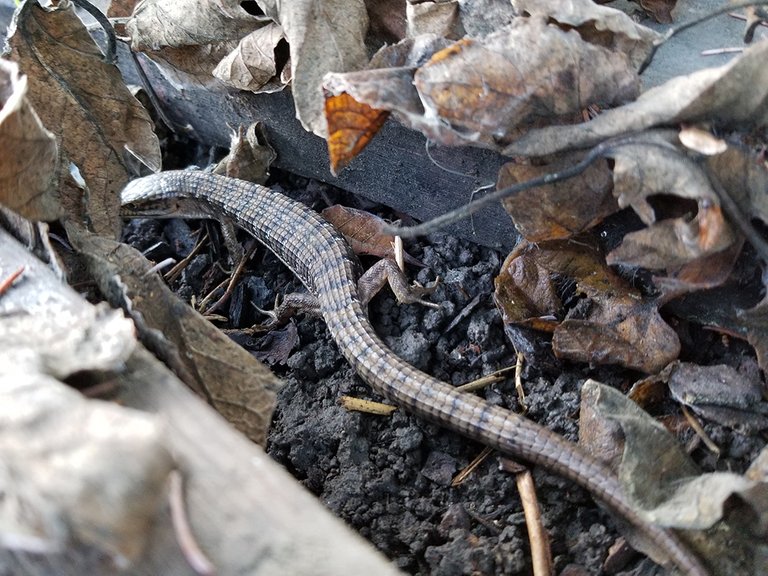
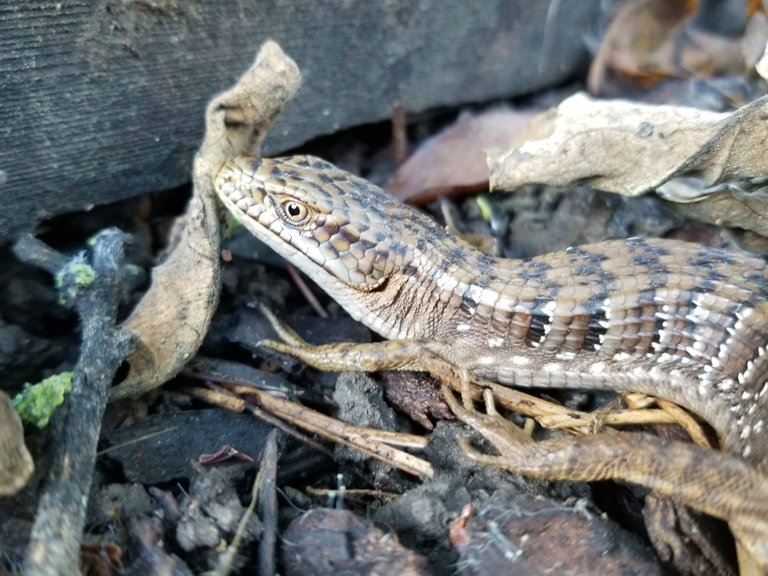
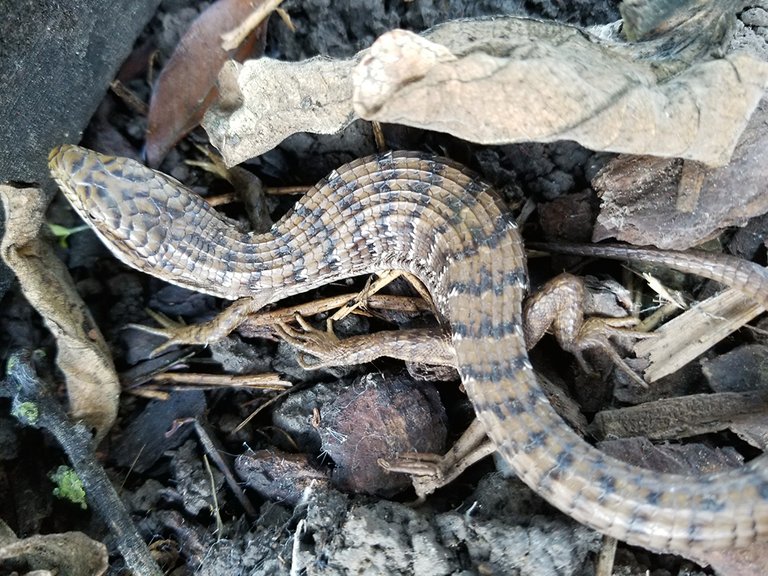

Such strange lizards! Very long, and therefore look like snakes.
Only the alligator lizard is a reptile and real lizard, the salamanders ate amphibians! They both sure do have long bodies and get often mistaken for snakes, though!